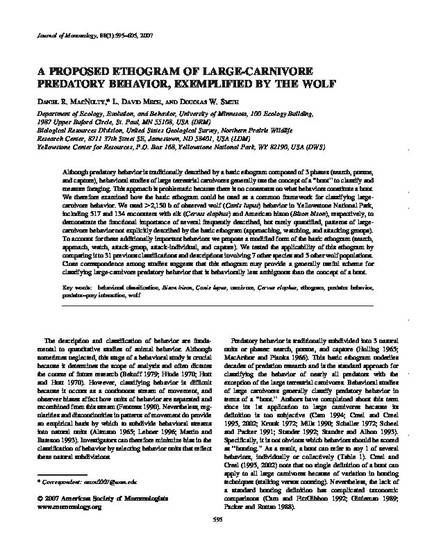
Article
Proposed ethogram of large carnivore predatory behavior, exemplified by the wolf
Journal of Mammalogy
(2007)
Abstract
Although predatory behavior is traditionally described by a basic ethogram composed of 3 phases (search, pursue, and capture), behavioral studies of large terrestrial carnivores generally use the concept of a “hunt” to classify and measure foraging. This approach is problematic because there is no consensus on what behaviors constitute a hunt. We therefore examined how the basic ethogram could be used as a common framework for classifying large-carnivore behavior. We used >2,150 h of observed wolf (Canis lupus) behavior in Yellowstone National Park, including 517 and 134 encounters with elk (Cervus elaphus) and American bison (Bison bison), respectively, to demonstrate the functional importance of several frequently described, but rarely quantified, patterns of large-carnivore behavior not explicitly described by the basic ethogram (approaching, watching, and attacking groups)...
Keywords
- Ethogram,
- large carnivore,
- predatory behavior,
- wolf
Disciplines
Publication Date
2007
DOI
https://doi.org/10.1644/06-MAMM-A-119R1.1
Citation Information
MacNulty, D.R., L.D. Mech, and D.W. Smith (2007) A proposed ethogram of large
carnivore predatory behavior, exemplified by the wolf. Journal of Mammalogy
88:595-605.
